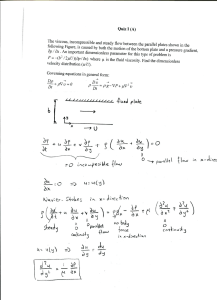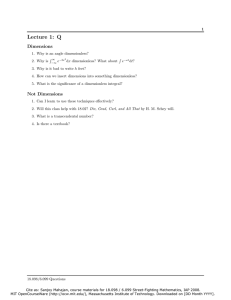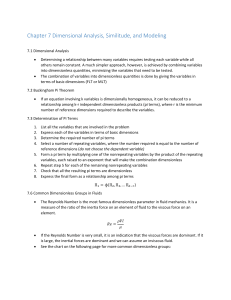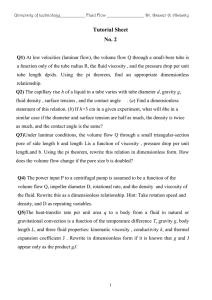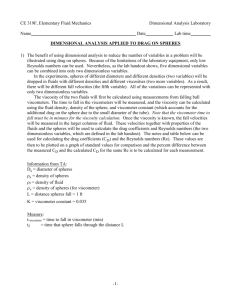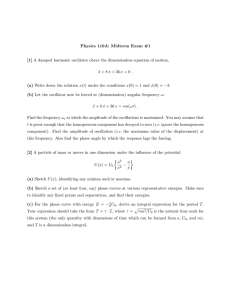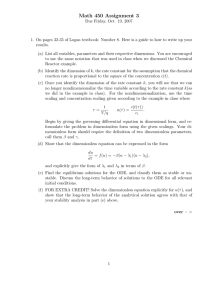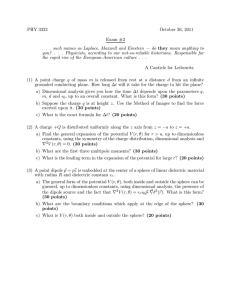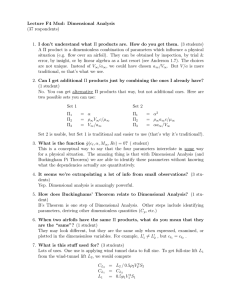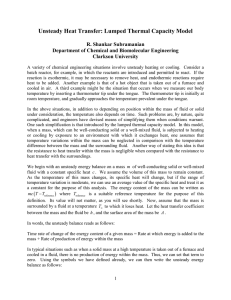HOMEWORK A
advertisement
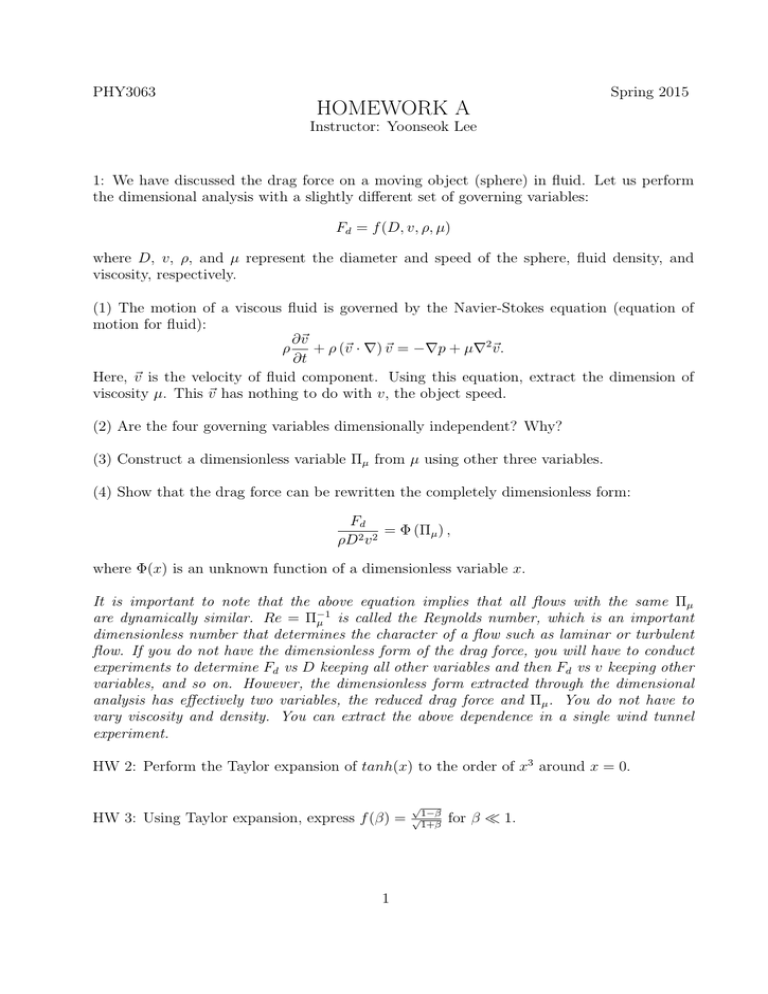
PHY3063 Spring 2015 HOMEWORK A Instructor: Yoonseok Lee 1: We have discussed the drag force on a moving object (sphere) in fluid. Let us perform the dimensional analysis with a slightly different set of governing variables: Fd = f (D, v, ρ, µ) where D, v, ρ, and µ represent the diameter and speed of the sphere, fluid density, and viscosity, respectively. (1) The motion of a viscous fluid is governed by the Navier-Stokes equation (equation of motion for fluid): ∂~v + ρ (~v · ∇) ~v = −∇p + µ∇2~v . ρ ∂t Here, ~v is the velocity of fluid component. Using this equation, extract the dimension of viscosity µ. This ~v has nothing to do with v, the object speed. (2) Are the four governing variables dimensionally independent? Why? (3) Construct a dimensionless variable Πµ from µ using other three variables. (4) Show that the drag force can be rewritten the completely dimensionless form: Fd = Φ (Πµ ) , ρD2 v 2 where Φ(x) is an unknown function of a dimensionless variable x. It is important to note that the above equation implies that all flows with the same Πµ are dynamically similar. Re = Π−1 µ is called the Reynolds number, which is an important dimensionless number that determines the character of a flow such as laminar or turbulent flow. If you do not have the dimensionless form of the drag force, you will have to conduct experiments to determine Fd vs D keeping all other variables and then Fd vs v keeping other variables, and so on. However, the dimensionless form extracted through the dimensional analysis has effectively two variables, the reduced drag force and Πµ . You do not have to vary viscosity and density. You can extract the above dependence in a single wind tunnel experiment. HW 2: Perform the Taylor expansion of tanh(x) to the order of x3 around x = 0. HW 3: Using Taylor expansion, express f (β) = 1 √ √1−β 1+β for β 1. HW 4: A particle of mass m is moving in 1-dimension under potential energy given by 3 1 1 U (x) = − x3 + ax2 − 2a2 x + a3 3 2 3 (a > 0). (1) Without using the aid of graphing calculator, plot U (x). (2) You will find a minimum in U (x). The particle is oscillating around the minimum point. What is the oscillation frequency fo ? HW 5: Tipler 1-10. HW 6: Consider an inelastic collision in which two particles collide and scatter into two other particles: A + B → C + D. mA , mB , mC , and mD represent the mass of each particle. Show that the law of conservation of classical linear momentum is invariant under the Galilean transformation if and only if total mass is conserved. 2
